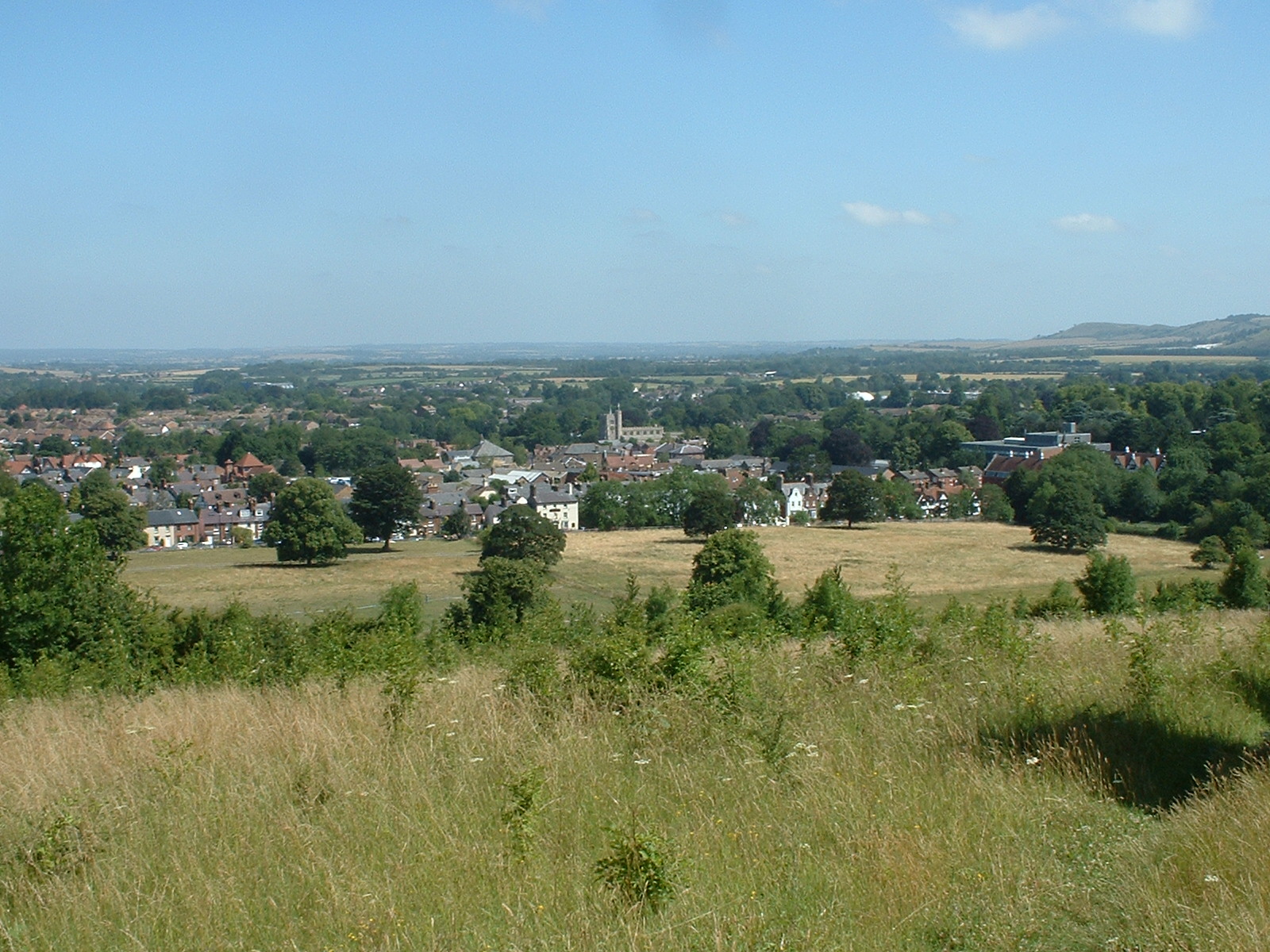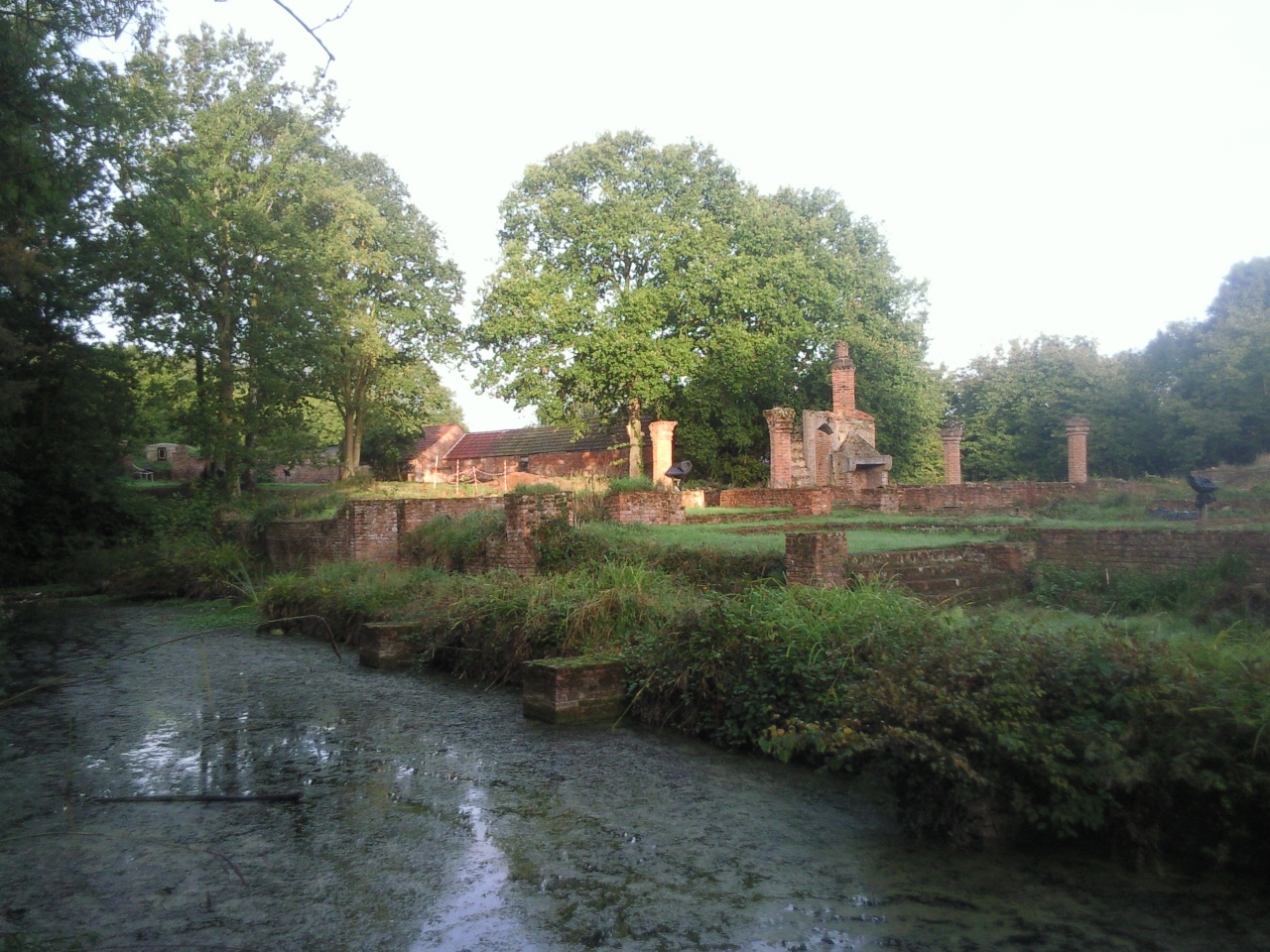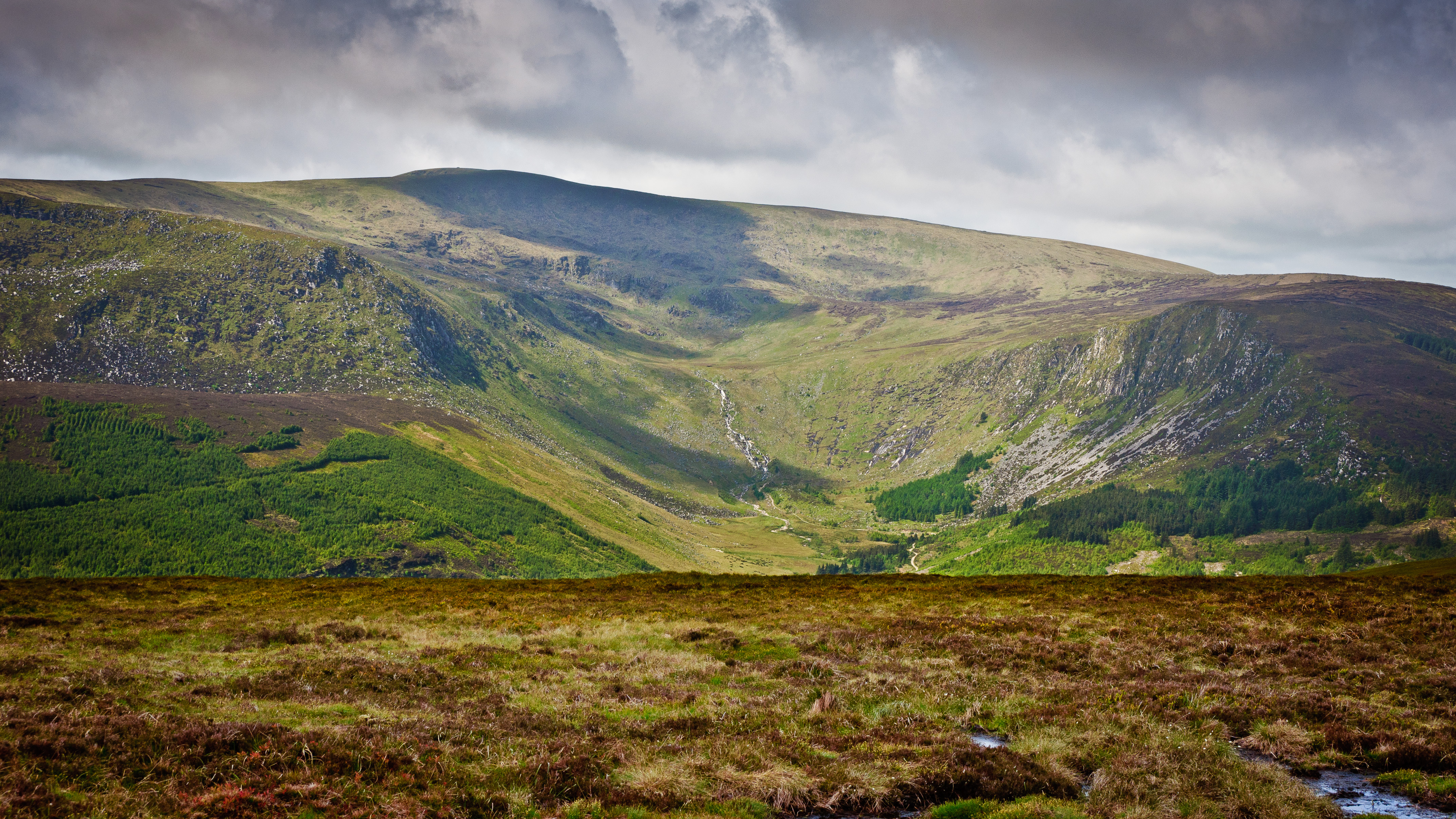|
Peter Carew (soldier)
Sir Peter Carew (died 25 August 1580) was an English soldier who was slain at the Battle of Glenmalure in Ireland. He was a member of a prominent Devonshire gentry family. He is sometimes referred to as Sir Peter Carew the younger, to distinguish him from his first cousin (and immediate predecessor as head of the family) Sir Peter Carew (c.1514–1575) of Mohuns Ottery, Luppitt, Devon. Origins Peter Carew was the eldest son of George Carew (1497/8–1583), Dean of Windsor, Dean of Exeter and Archdeacon of Totnes, third son of Sir Edmund Carew, Baron Carew, of Mohuns Ottery in the parish of Luppitt, Devon, by his wife Catharine Huddesfield, a daughter and co-heiress of Sir William Huddesfield (died 1499) of Shillingford St George in Devon, Attorney General to Kings Edward IV (1461–1483) and Henry VII (1485–1509).Vivian 1895, p.135. His younger brother was George Carew (1555–1629), later 1st Earl of Totnes; and his sister was Mary Carew (d. 1604), the wife of Walter ... [...More Info...] [...Related Items...] OR: [Wikipedia] [Google] [Baidu] |
Idrone West
Idrone West () is a barony in County Carlow, Ireland. The early barony of Idrone was split into East and West in 1799. Etymology Idrone takes its name from the ancient name for the tuath, first recorded c. 1100 as ''Hua Drona'' in the Latin '' Vitae sanctorum Hiberniae''. '' The Martyrology of Oengus the Culdee'' (c. 1150) calls it ''Huib Dróna'' in Middle Irish. The ruling family claimed descent from Drona, fourth son of Cathair Mór, a legendary 2nd century AD king. Location Idrone West is found in the western part of County Carlow, west of the River Barrow. Idrone West barony is bordered to the southeast by Idrone East; to the northeast by Carlow; (both the preceding baronies are also in County Carlow); to the west by Gowran and Fassadinin, County Kilkenny; and to the northwest by Slievemargy, County Laois. History The Uí Bairrche Uí Bairrche (, ) was an Irish kin-based group that originally held lands in the south of the ancient province of Leinster (or ''Cóiced ... [...More Info...] [...Related Items...] OR: [Wikipedia] [Google] [Baidu] |
Sheriff Of Hertfordshire
The High Sheriff of Hertfordshire was an ancient Sheriff title originating in the time of the Angles, not long after the foundation of the Kingdom of England, which was in existence for around a thousand years. On 1 April 1974, under the provisions of the Local Government Act 1972, the title of Sheriff of Hertfordshire was retitled High Sheriff of Hertfordshire. The High Shrievalties are the oldest secular titles under the Crown in England and Wales, their purpose being to represent the monarch at a local level, historically in the shires. The office was a powerful position in earlier times, as sheriffs were responsible for the maintenance of law and order and various other roles. It was only in 1908 under Edward VII that the Lord Lieutenant became more senior than the High Sheriff. Since then the position of High Sheriff has become more ceremonial, with many of its previous responsibilities transferred to High Court judges, magistrates, coroners, local authorities and the poli ... [...More Info...] [...Related Items...] OR: [Wikipedia] [Google] [Baidu] |
Sheriff Of Buckinghamshire
The High Sheriff of Buckinghamshire, in common with other counties, was originally the King's representative on taxation upholding the law in Saxon times. The word Sheriff evolved from 'shire-reeve'. Sheriff is the oldest secular office under the Crown. Formerly the sheriff was the principal law enforcement officer in the county but over the centuries most of the responsibilities associated with the post have been transferred elsewhere or are now defunct, so that its functions are now largely ceremonial. Under the provisions of the Local Government Act 1972, on 1 April 1974 the office previously known as Sheriff was retitled High Sheriff. The title of sheriff is therefore much older than the other Crown appointment, the Lord Lieutenant of Buckinghamshire, which came about in 1535. Unlike the Lord Lieutenant of Buckinghamshire, which is generally held from appointment until the holder's death or incapacity, the title of High Sheriff is appointed or reappointed annually. The Hig ... [...More Info...] [...Related Items...] OR: [Wikipedia] [Google] [Baidu] |
Tring
Tring is a market town and civil parish in the Borough of Dacorum, Hertfordshire, England. It is situated in a gap passing through the Chiltern Hills, classed as an Area of Outstanding Natural Beauty, from Central London. Tring is linked to London by the Roman road of Akeman Street, by the modern A41 road, by the Grand Union Canal and by the West Coast Main Line to London Euston. Settlements in Tring date back to prehistoric times and it was mentioned in the Domesday Book; the town received its market charter in 1315. Tring is now largely a commuter town within the London commuter belt. As of 2021, Tring had a population of 12,427. Toponymy The name Tring is believed to derive from the Old English ''Tredunga'' or ''Trehangr'', 'Tre' meaning 'tree' and the suffix 'ing' implying 'a slope where trees grow'. History There is evidence of prehistoric settlement with Iron Age barrows and defensive embankments adjacent to The Ridgeway, and also later Saxon burials. The ... [...More Info...] [...Related Items...] OR: [Wikipedia] [Google] [Baidu] |
Pendley Manor
Pendley Manor is a hotel, conference and function centre near Tring, Hertfordshire, UK. It is a historic country house and is Grade II listed as an important example of Victorian architecture. History A village of Pendley (or ''Penley'', ''Pendele'', or ''Pentlai'') is recorded from the 4th century AD, held in the honour of Berkhampstead. The manor of Pendley pre-dates the Norman Conquest of 1066, after which it was confiscated by William the Conqueror and passed to his brother-in-law, Robert, Count of Mortain, who became one of the greatest landholders in the newly conquered Kingdom of England. A later owner was John de Angle, an early Member of Parliament. The Whittinghams and the Verneys By the 15th century, Pendley was a small town. In 1440 the county sheriff of Essex and Hertfordshire Sir Robert Whittingham (or ''Whytingham'') and his wife Agnes received a grant of free warren from King Henry VI at Pendley manor; Sir Robert enclosed 200 acres and tore down the build ... [...More Info...] [...Related Items...] OR: [Wikipedia] [Google] [Baidu] |
Allen Apsley (administrator)
Sir Allen Apsley (1567 – 24 May 1630) was an English merchant, courtier and landowner, lord of the manor of Feltwell, and Naval administrator. He was Surveyor of Marine Victuals of the Royal Navy from 1612 to 1630. Biography Born in London, Apsley was the son of the rich merchant Sir John Apsley in Pulborough, West Sussex, and the City of London, and his wife Elizabeth, daughter of Edward Shelly of Worminghurst, West Sussex. Sir Allen Apsley was first knighted in Ireland, on 5 June 1605. On 31 January 1612 he was appointed joint Surveyor of Marine Victuals of the Royal Navy (with Sir Marmaduke Darrell) – a post usually held for life. On 3 March 1617 Apsley was appointed Lieutenant of the Tower of London by James I. Apsley's second wife, Anne, daughter of Sir Peter Carew, Knt.,''The Complete Peerage'' by G.E.Cockayne, edited by the Hon. Vicary Gibbs, and H. Arthur Doubleday, vol.iv, London, 1916, p. 32. was related by marriage to the Villiers family, and Apsley was cons ... [...More Info...] [...Related Items...] OR: [Wikipedia] [Google] [Baidu] |
Grove, Buckinghamshire
Grove is a village and former civil parish, now in the parish of Slapton, Buckinghamshire, England. It is on the border with Bedfordshire, just to the north of Mentmore. It is the size of some hamlets, but it is distinct as a village because it had its own parish church. The place name is fairly self-explanatory, as it means 'grove', or a copse of trees. It was recorded in the Domesday Book of 1086 as ''Grova'', and was considered a separate village even then. In 1961 the parish had a population of 12. On 1 April 1982 the parish was abolished and merged with Slapton. In medieval times there was an abbey or priory of nuns in the parish, founded in 1169 by Henry II and attached to Fontevrault Abbey in France. Following the wars with France it was given to the dean and Canons of Windsor. The remains of this abbey were fully excavated in the late 1960s just before they were lost forever in connection with the sand-quarrying industry of Leighton Buzzard. It has been suggested tha ... [...More Info...] [...Related Items...] OR: [Wikipedia] [Google] [Baidu] |
Francis Walsingham
Sir Francis Walsingham ( – 6 April 1590) was principal secretary to Queen Elizabeth I of England from 20 December 1573 until his death and is popularly remembered as her " spymaster". Born to a well-connected family of gentry, Walsingham attended Cambridge University and travelled in continental Europe before embarking on a career in law at the age of twenty. A committed Protestant, during the reign of the Catholic Queen Mary I of England he joined other expatriates in exile in Switzerland and northern Italy until Mary's death and the accession of her Protestant half-sister, Elizabeth. Walsingham rose from relative obscurity to become one of the small coterie who directed the Elizabethan state, overseeing foreign, domestic and religious policy. He served as English ambassador to France in the early 1570s and witnessed the St. Bartholomew's Day massacre. As principal secretary, he supported exploration, colonisation, the development of the navy, and the plantat ... [...More Info...] [...Related Items...] OR: [Wikipedia] [Google] [Baidu] |
Wicklow Mountains
The Wicklow Mountains (, archaic: '' Cualu'') form the largest continuous upland area in Ireland. They occupy the whole centre of County Wicklow and stretch outside its borders into the counties of Dublin, Wexford and Carlow. Where the mountains extend into County Dublin, they are known locally as the Dublin Mountains (''Sléibhte Bhaile Átha Cliath''). The highest peak is Lugnaquilla at . The mountains are primarily composed of granite surrounded by an envelope of mica-schist and much older rocks such as quartzite. They were pushed up during the Caledonian orogeny at the start of the Devonian period and form part of the Leinster Chain, the largest continuous area of granite in Ireland and Britain. The mountains owe much of their present topography to the effects of the last ice age, which deepened the glens and created corrie and ribbon lakes. Copper and lead have been the main metals mined in the mountains and a brief gold rush occurred in the 18th century. Several major ... [...More Info...] [...Related Items...] OR: [Wikipedia] [Google] [Baidu] |
Glenmalure
Glenmalure () is a 20-kilometre long U-shaped glacial valley in the Wicklow Mountains in Ireland. Glenmalure is an important base for climbing in the Wicklow mountains, and particularly accessing the massif of Lugnaquilla, and contains one of the earliest An Óige youth hostels in Ireland. Glenmalure was also an important historical area and the site of the Battle of Glenmalure in 1580, as well as various events in the Irish Rebellion of 1798. Geography Glenmalure is a 20-kilometre long glacial valley in the southern sector of the Wicklow Mountains and is one of the longest glacial valleys in Ireland. A number of adjoining hanging valleys, most notably the Fraughan Rock Glen, feed into Glenmalure valley, which was formed by feeder glaciers in the last ice age. The valley runs from the northwest down to the southeast. Its western flank is dominated by the large massif of Lugnaquilla , the County Top for Wicklow, and the Provincial Top for Leinster. The steep walls of it ... [...More Info...] [...Related Items...] OR: [Wikipedia] [Google] [Baidu] |
Arthur Grey, 14th Baron Grey De Wilton
The Rt Hon. Arthur Grey, 14th Baron Grey de Wilton, KG (1536–1593), was a baron in the Peerage of England. Lord Grey de Wilton is now largely remembered for his memoir of his father, for participating in the last defence of Calais (1558), and for his involvement in the massacre after the Siege of Smerwick (1580) on '' Corca Dhuibhne'' in County Kerry. He served as Lord Deputy of Ireland from 1580 until 1582. Life Arthur Grey was the eldest son of The 13th Baron Grey de Wilton and Mary, daughter of The 1st Earl of Worcester. He was a Knight and he was recorded as being Lord Lieutenant of Buckinghamshire on two separate occasions, in both 1569 and 1587, though it is not recorded if he held that title for all the years in between. He probably went with his father to Guisnes in 1553; certainly, he was there when the French declared war in 1557; his eyewitness account of his father's last desperate defence of Guisnes, after Calais itself has fallen, remains the best source ... [...More Info...] [...Related Items...] OR: [Wikipedia] [Google] [Baidu] |




